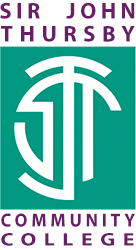Topic 8 Year 7 Mathematics
| Mathematics | |||
| Topic | Classifying 2-D shapes | ||
| No of lessons | 8 | ||
| When is it happening | Term 2 Year 7 | ||
| What will students learn | This unit involves analysing the geometric properties of polygons before focusing more closely on triangles and quadrilaterals. Students begin by classifying polygons by their properties including number of sides, number of line and rotational symmetries, types of internal angles, number of equal sides, and number of parallel sides. Students are encouraged to conjecture and prove which properties are the result of other properties. For example, if a polygon has as many line symmetries as sides then it must be regular. | ||
| Key Knowledge that students should know at the end of 'Topic' | This is the knowledge that students will meet for the first time in this topic | Defining and identifying the the order of rotational symmetry. Creating and testing conjectures regarding rotational symmetry in polygons. Identifying and counting the lines of symmetry. Creating and testing conjectures regarding reflectional symmetry in polygons. Describing the properties of scalene, isosceles and equilateral triangles. Identifying and classifying triangles inscribed in circles. Understanding that the interior angles in a triangle sum to 180°. Solve problems involving unknown angles in triangles. Providing the opportunity to revisit the names of quadrilaterals from KS2. Comparing the symmetry, side length, number of parallel sides and angles in quadrilaterals. Comparing the properties of diagonals in quadrilaterals. Using triangles to deduce the sum of the interior angles in quadrilaterals. Finding unknown angles in quadrilaterals. Using the properties of triangles and quadrilaterals to create and describe tessellation patterns. | |
| This is knowledge that students may have met before but will need to deepen their understanding | Familiarity with basic features and vocabulary of polygons. Understanding angle as a measure of turn. Experience of reflection or mirror lines. Familiarity with basic features of triangles. Understanding reflection symmetry. Understand angle properties in parallel lines. Familiarity with triangle classification. Familiarity with basic angle and parallel facts and notation. Familiarity with names of quadrilaterals. Familiarity with the features of quadrilaterals. Understanding basic angle facts. Understanding of symmetry. Understand the interior angle sum of triangles. Familiarity with quadrilaterals and other polygons. Understand the interior angle sum of quadrilaterals Understand the properties of special quadrilaterals. | ||
| Key Skills that students should be able to demonstrate at the end of 'Topic' | This is the skills that students will meet for the first time in this topic | Tessellating shapes | |
| This is skills that students may have met before but will need to develop | Rotating shapes | ||
| Key vocabulary that students should know and understand | Polygon | ||
| The Big Question | What is rotational symmetry? | ||
|
Key questions that students should be able to answer at the end of the 'Topic' |
Can I state the number of lines of symmetry for a given shape? | ||
| Can I draw a polygon with given number of symmetry lines? | |||
| What are the possible orders of rotational symmetry for a triangle? | |||
| Can I find the unknown angles in the triangles? | |||
| Can I draw quadrilaterals and compare their features? | |||
| On a quadrilateral shape, can I draw the diagonal lines and can I identify if they are perpendicular? | |||
| Can I find the missing interior angles in a quadrilaterals shape? | |||
| Given two shapes, can I draw a tessellating pattern? | |||
